All of the photos used on this page and more are located in the img folder.
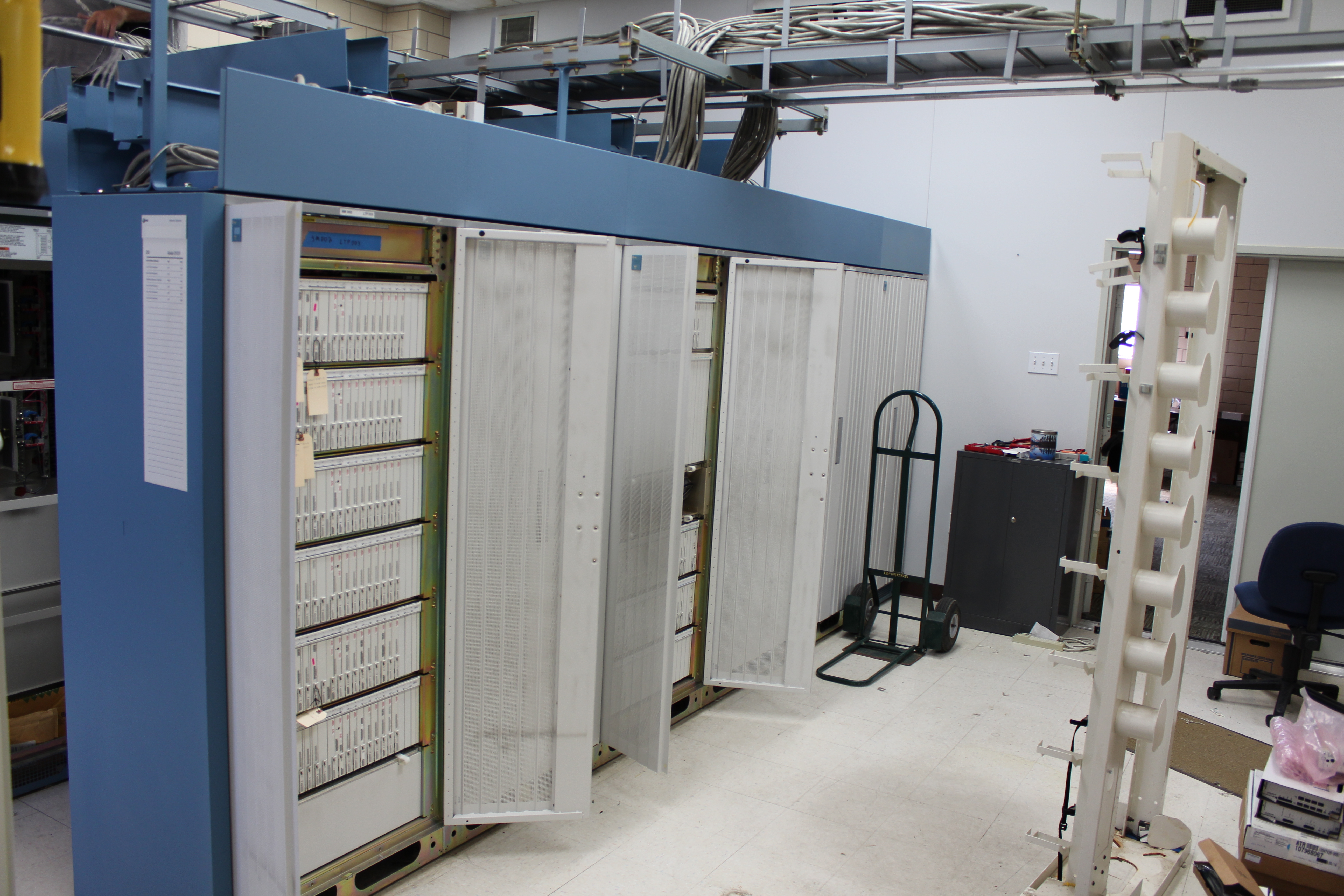
I don't remember exactly when I became aware of it, but I learned that a fellow telephone switch enthusiast was in the works of obtaining a Lucent 5ESS-CDX from a small telco that had retired it several years prior. Given that I had prior experience with removal of telephone switching equipment, I figured I better offer my help.
The removal was set to begin late May and last about a week extending into early June. I took the appropriate PTO from work to allow some time to pack and then recover after the trip.
I made the decision to drive so that I could load up my car with tools and equipment that might be useful. I looked back through my list of stuff I brought during my SL-100 removal and made plans to bring much of the same equipment such as my appliance hand truck and Fairbanks C84-IW lever dolly (sometimes called a Johnson bar).
My drive began on Wednesday, May 31st, 2023. I finished packing my car the previous night and probably stayed up too late as usual, trying to get everything in the car. As a result, I left later than I had intended.
I ended up getting caught in rush-hour chicago traffic. I was somewhere on I-290 heading into chicago when the overtemperature light on my gauge cluster turned on. The engine temperature gauge was pegged at the hot end, so I pulled over on the side of the highway.
After some testing, I was able to determine that my radiator fan was not spinning. I slowly realized that this had been an issue for a while and I simply hadn't noticed.
Normally, a car moving at-speed has enough natural air flow into the radiator that the fan isn't actually needed. During my normal driving, I didn't deal with a lot of stop-and-go traffic, so I had always been moving enough to not notice the issue. However, I had noticed that when I was stopped, the A/C would cycle off in the week or two prior to this trip, and that made sense now that I knew the radiator fan wasn't working. While the engine coolant takes a while to heat up, the A/C condenser (cooled by the same fan) doesn't take nearly as long, and high condenser temperatures will trigger a high pressure cutout shutting down the A/C.
Anyway, now I had to decide if I could even make this trip or not. I got off the highway and found a parking lot near an autopart store and did some further investigations. As far as I could tell, it was the fan motor itself that was bad, which was not something I was going to change on a whim in a parking lot.
I had, at some point, remembered that you can cool the engine by running the heat, and this proved to be quite effective. And of course, that was only necessary when the car wasn't moving or was moving in stop and go traffic. I decided this wasn't an issue and I could drive the car like this as long as I knew what to do.
The rest of the trip was uneventful. I arrived at my hotel that night and touched base with the other people involved in the 5ESS removal to figure out what the plans were for the next morning and then went to bed.
Thursday morning, I arrived at the CO. A couple people had already been there for two days and they had begun to work on power and fiber optic cable removal. Most of the rest of the group arrived at the CO for the first time Thursday.
We went through the general plan for removal as well as some guidelines. Since the CO we were in was an operating office, we would be extra careful cutting or removing any cables. The last thing we wanted to do was cause some kind of outage or issue. To mitigate that, the guidance we came up with was that before any cable could be cut, both ends needed to be located with certainty. This worked well, and we didn't have any incidents through the entire removal process.
I spent most of the day assisting with cable removal. Each cable first needed to be disconnected from the equipment, then traced through the cable troughs on top of the cabinets, then traced through the cable rack, and if it left the room towards the MDF it would be cut and the piece fished out of all the cable trough and racking. Then the cable would be wound up for storage.
While a few of us worked on that, others went to get some supplies we would need later, like a couple pallets and some OSB to build some gaylord type pallets to dump all the cable into that would be removed. We also got a number of carboard boxes to pack smaller items into.
Once those supplies had been procured, one person focussed on packing the smaller items away into the boxes while the rest of us worked on cables.
At some point, we began to look at what would be required to disassemble the frames so that they were free to move on their own. The cable troughs had to be removed from the top of the frame, of course, and the frames also had to be unbolted from the adjacent frame. Where present, mounting hardware had to be removed from the floor as well.
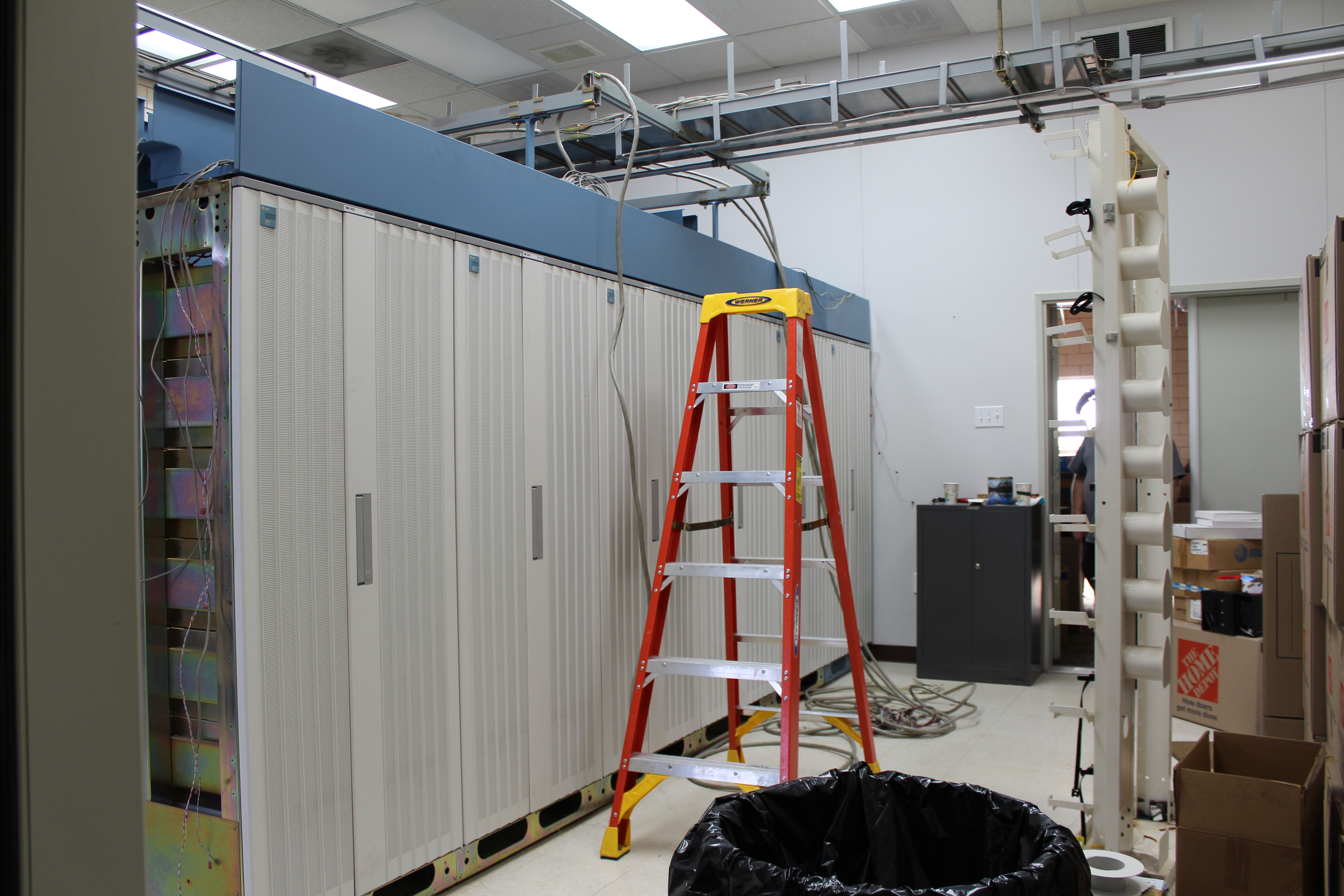
At the end of the first day, we had most of the cable removed from the frontmost lineup. In the picture at right, you can see only a few more cables remain to be removed.
That night, I took the hard drives home from the 5ESS. I had brought along a PC with a SCSI card that was running linux. I imaged the drives so that we had a good copy just in case something got damaged in transport.
The next day was mostly more of the same. We continued to remove cabling, box up parts, and dismantle the overhead structure. By the end of the day, we had the cable racking removed from the top of the switch and only a few dozen cables remained to be removed.
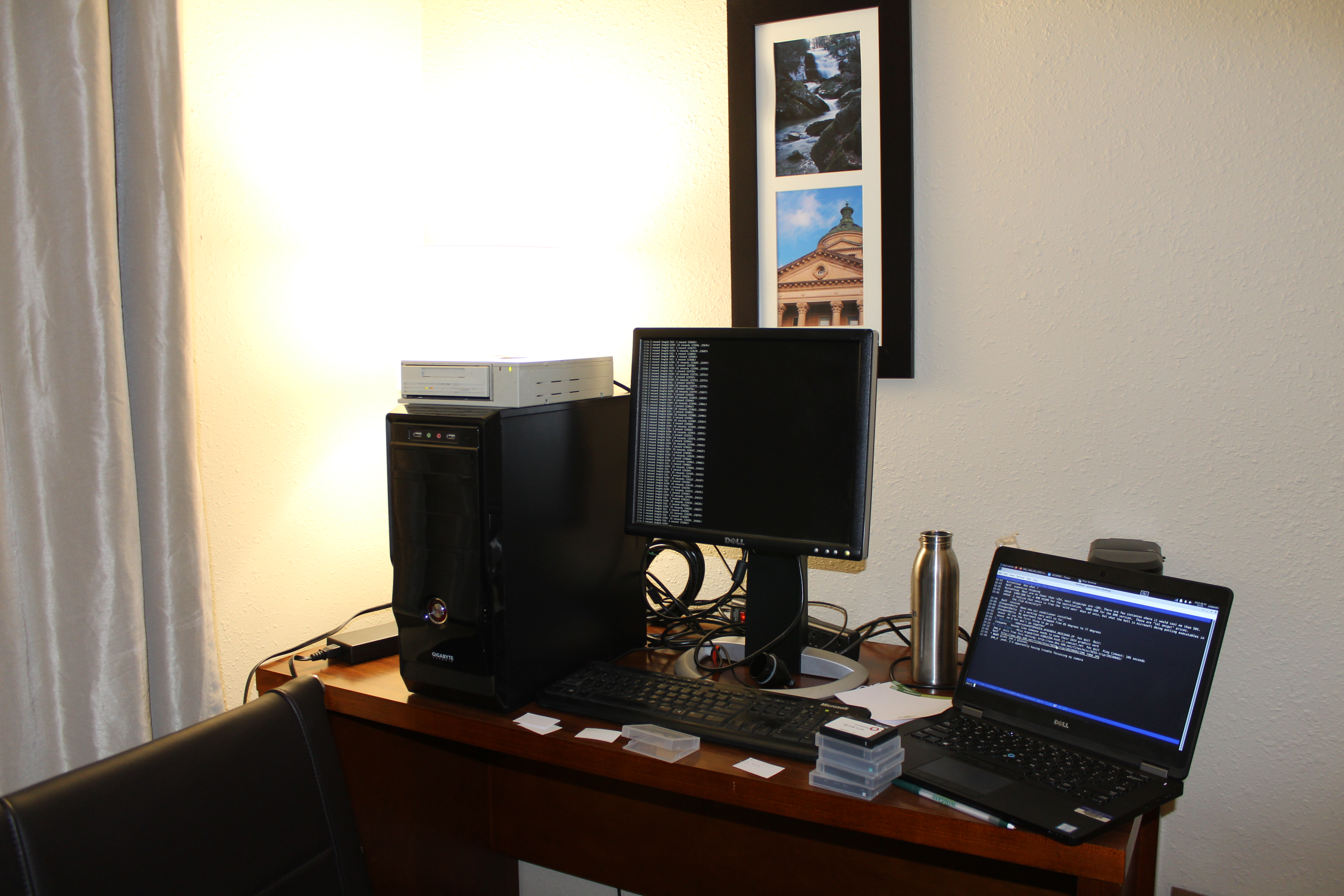
That night, I shifted my efforts to imaging some tapes. I had brought along a DDS drive and I used tapeutils to make an image of some of the tapes. As DDS is slow, I don't believe I finished all of the images that night.
Saturday, we fished out the last of the cables, got everything remaining boxed up, and got all the last of the bolts and fasteners removed from the cabinets. I think we spent some time stripping the MDF of all the cut cables and disused terminal blocks as well. Some of the would remain to be done on Monday.
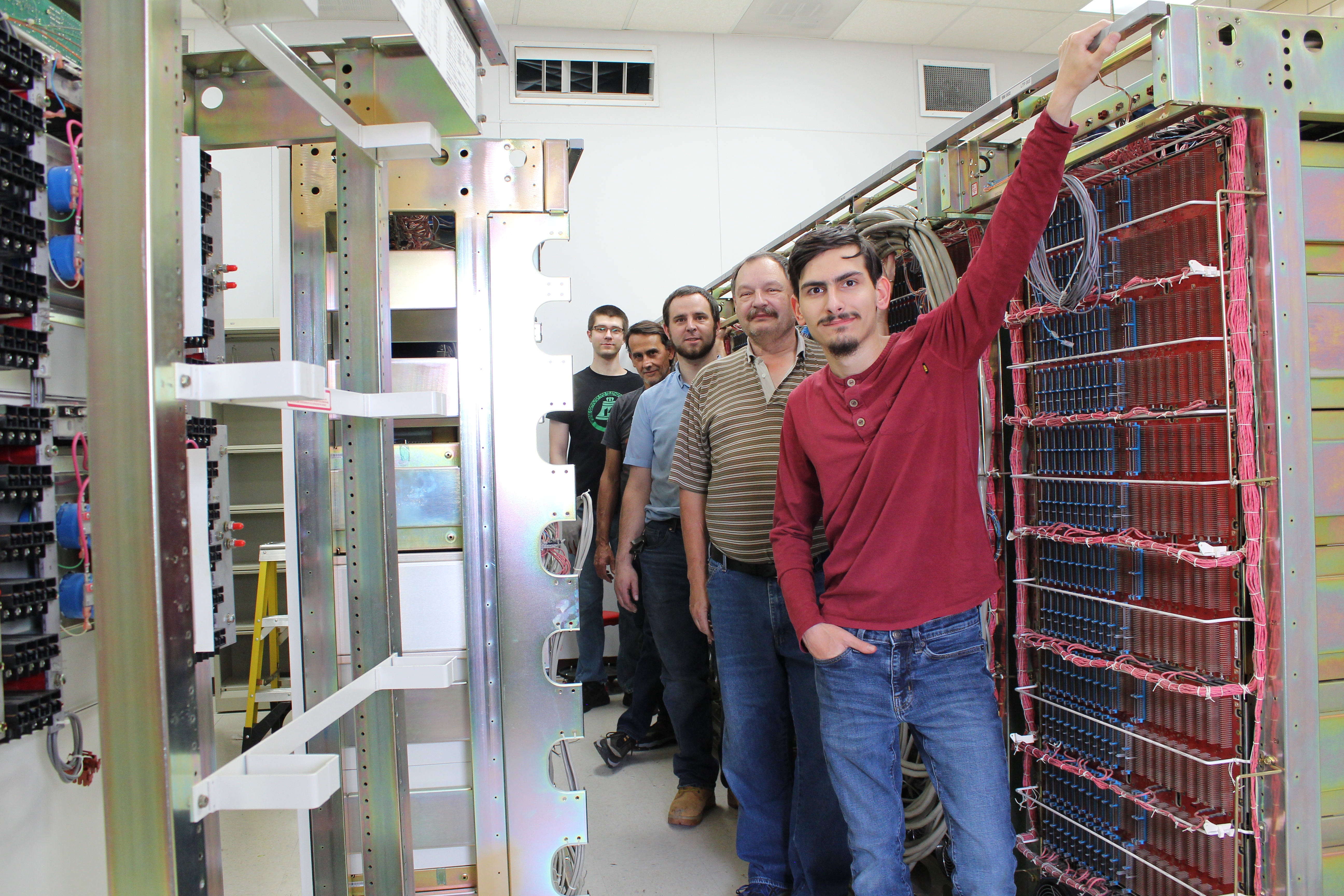
We took a group photo once we had everything disassembled and ready to move. One member of our group had already left, and another member had not yet shown up when we took this photo.
Since we had everything done, that meant we wouldn't have to work any more on the removal on Sunday. On Monday, movers had been hired to load the cabinets onto the truck.
That night, I think I worked on imaging the tapes again.
Sunday, we didn't do any work in the CO. Instead, we took the day off. Two members of our group were flying home, and there wasn't much left to do at the CO, so we just drove around checking out local infrastructure and exploring.
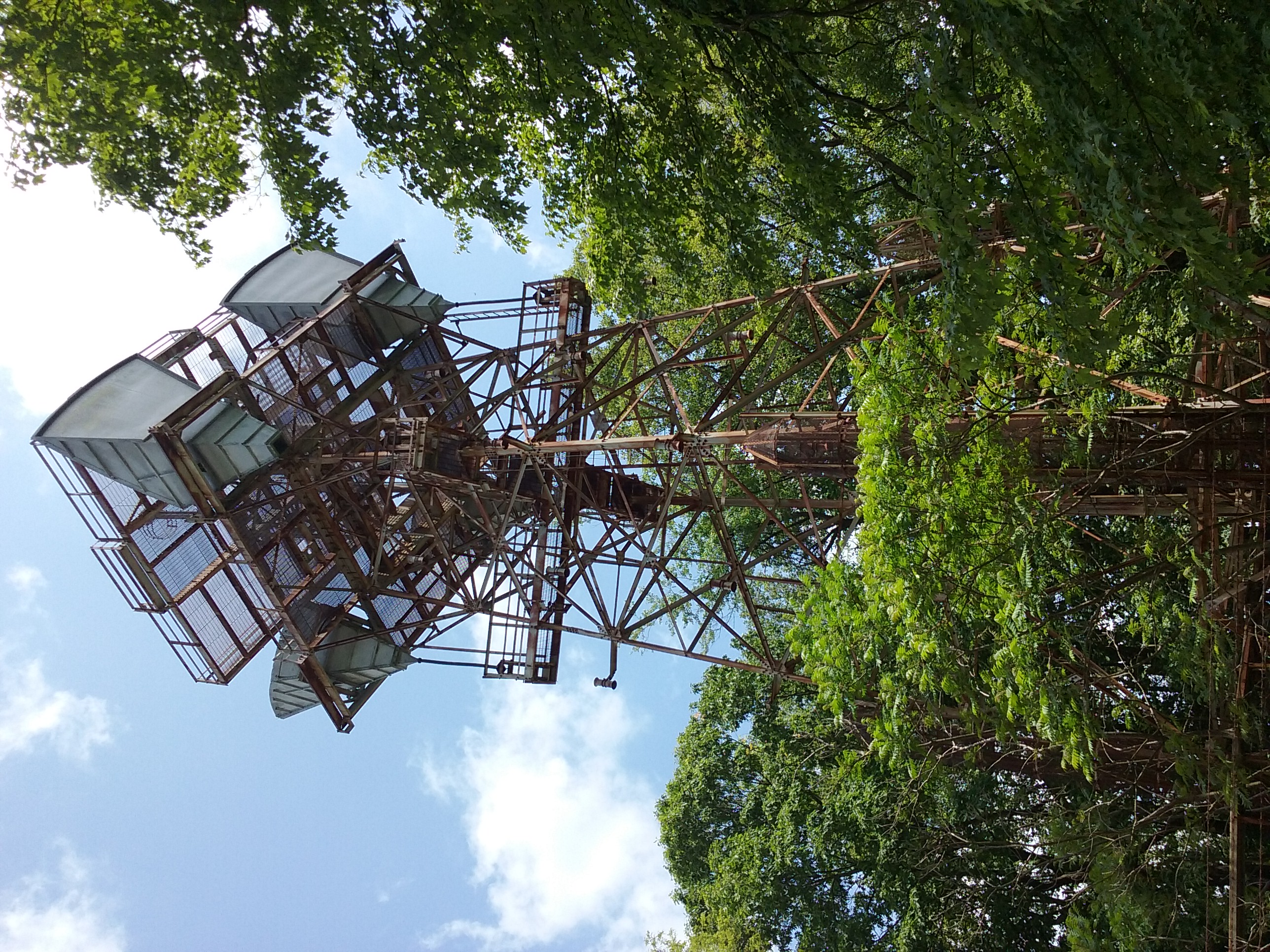
We visited a couple old longlines sites and one of the COs in pittsburgh.
Later that night, we got dinner, and then returned to our respective lodging.
I don't remember if I had DDS tapes to finish imaging that night, but if I did I'm sure I finished them up and then packed up the imaging computer. We would be leaving Monday afternoon, so I made sure I had everything packed up and ready for the next morning.
On Monday, we finished stripping what was left from the MDF. When the movers arrived, we switched focus to that.
As the frames went into the truck, so did the cable troughs that had come off the top, to be mounted again for storage. We packed boxes and smaller items in around the frames any way we could, securing everything as best as we could.
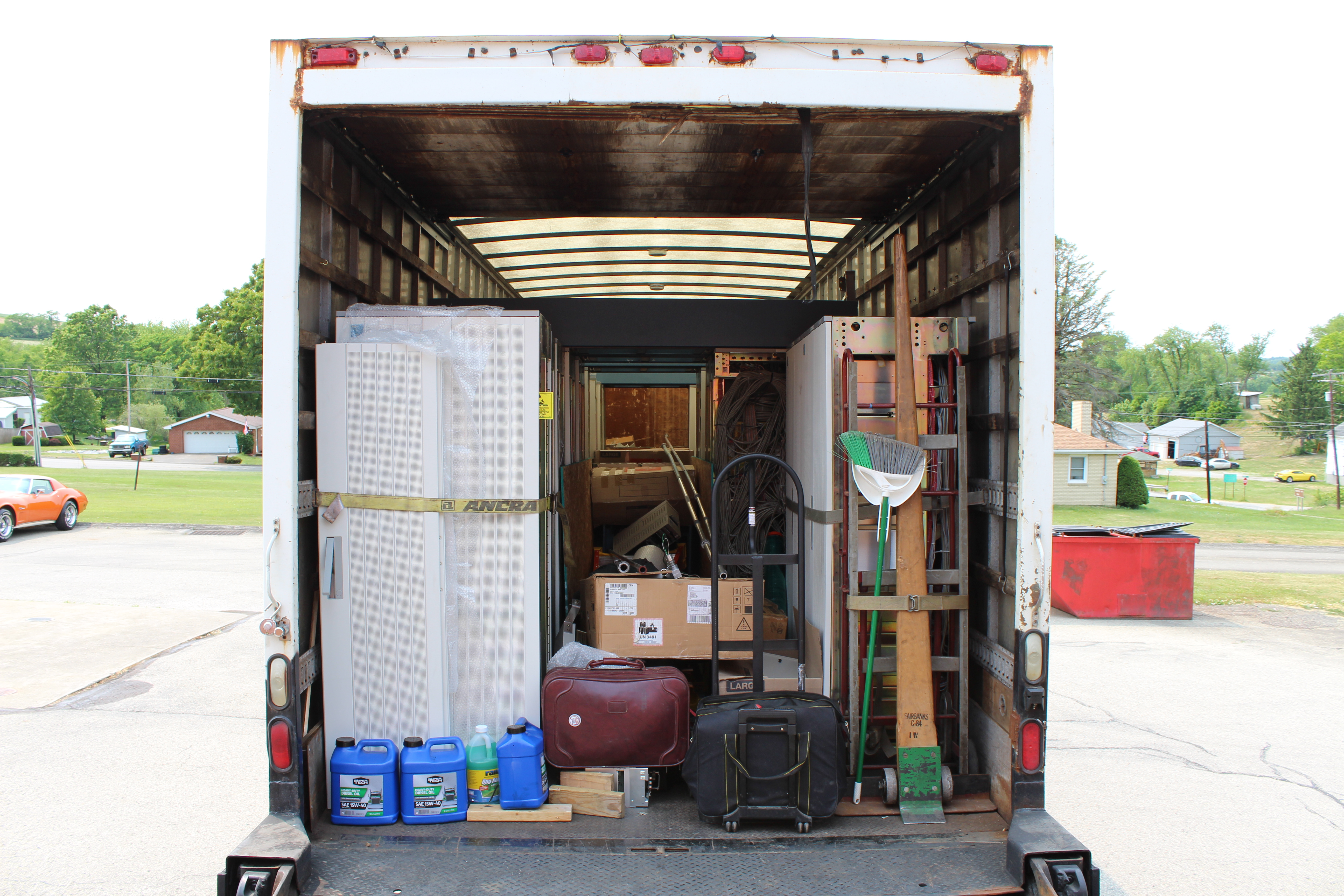
The end result was a very full truck.
I spent some time sweeping up and cleaning the switch room, packing up tools and preparing to leave. We made it on the road by mid afternoon.
Unfortunately, we ran into issues. The truck engine was leaking oil onto the exhaust manifold producing substantial smoke. That problem hadn't existed on the way to the CO, but on the way back, with the additional weight and loading, evidently the engine working harder had exacerbated that problem. There was concern about whether the oil on the exhaust could be a fire risk, and the truck was left somewhere for diagnosis (which turned out to be that the engine had excessive blowby and needed to be rebuilt, the oil was actually blowing out of the intake and saturating the air cleaner).
A while later, the engine was eventually rebuilt, and the truck made it on to it's temporary destination for storage until a proper home could be secured for the 5ESS.
At the time of writing, the 5ESS is most likely unloaded into a building (it was mostly unloaded the last time I saw it in September, but there were still a few cabinets to go). I'm sure it has yet to be physically arranged into aisles, and there's still a long road ahead for putting all the cabling back where it belongs.
A number of the other members of the removal group took photos or video and later shared them online. All of my photos are located in the img folder. Sxsphil made a youtube video. Telephone World made a post about their involvement during the removal process.